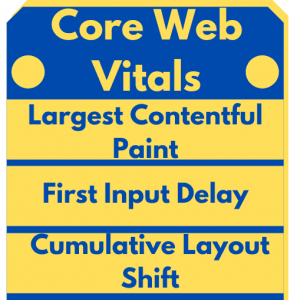It is predicted that Google makes up to 500 minor tweaks to its search algorithm every year. That’s not including their larger updates like Panda and Hummingbird, which rock organic search results every time they’re implemented, providing web developers, content writers, and Search Engine Optimization (SEO) strategists with a new set of rules to abide by. Just weeks ago we saw Google update the way they might automatically generate page titles on their Search Engine Results Pages (SERPs). And a little bit of link building doesn’t go nearly as far as it did a few years ago. Google’s algorithm is evolving every day, even moreso in 2021. Does this mean that SEO is unimportant?
Of course not!
The best practices to create good SEO skills are still important. Keeping up with the biggest updates can keep your content relevant and ranking, whether you’re a pro or an SEO beginner. According to a study by BrightEdge, over 50% of web traffic is channeled through organic searches. Social media and paid searches combined don’t hold a candle to learning, developing, and utilizing good SEO skills. We’ve got five great SEO tips for 2021 so that you can get ranking, too!
1) Core Web Vitals
Ever since last year, Google has been emphasizing a new category of rankings called Core Web Vitals. As of May 2021, they released a core algorithm update that better implements these Core Web Vitals into their search algorithm. The main tenants of Core Web Vitals are Loading (Largest Contentful Paint), Interactivity (First Input Delay), and Visibility (Cumulative Layout Shift). It also focuses on things such as “safe browsing” (not containing malware on your page) and how mobile-friendly a page is.

Improving loading means decreasing the load time for the Largest Contentful Paint (LCP), or the metric that measures the time a website takes to show the user the largest content on the screen. Is an image file holding your page back from loading a few seconds quicker? Or maybe you have to switch around the settings for an embedded video. Maybe a product page has too much other content that’s slowing it down. Whatever it is, pages are ranked more heavily by the largest piece of content that takes the longest to load, whether that’s video content, ads, or images.
Interactivity focuses on the First Input Delay (FID), or the measure of time from when a user first interacts with a page (i.e. when they click a link, tap on a button, or use a custom, JavaScript-powered control) versus the time when the browser is able to begin processing event handlers as a response to that interaction. As opposed to loading, which is just the speed it takes to load the page, this goes one step further and asks how long does it take for a user to interact with the page.
Most blog and article pages don’t have too much worry with this, since most people interact with them by scrolling, and there’s little else to change for that. However, for pages with logins or interactive fields, FID is super important. Make sure that third-party scripts that aren’t needed for a given page are removed, as well as possibly using a browser cache to get pages loaded faster.
Visibility focuses the Cumulative Layout Shift (CLS). This is a measure of how much the elements in a given page move around as it loads. Pages that load similarly to how they look finished score better than pages that look like Lego blocks rearranging themselves before you get to the final product. A more organized loading page has been important both for page load times and user experience. Keeping new UI elements below the fold and setting reserved spaces for ads can help minimize issues with visibility.
2) Meta Description
This might seem like a tip for an older SEO guide, but they’re still important! And apparently not enough people know how important they are it: only about 64% of web pages even have a meta description. Google SERP pages can rewrite them if there isn’t a meta description or if it believes the meta description doesn’t fit the search intent well, which is why it’s best to produce your own. Many times, the automatically-made meta descriptions Google tries to make are… well, they’re something. The average meta description should have about 155 characters in it, dependent on the pixel count. If your website’s SEO tools don’t have a way to check the meta description length, you can always use an external tool like Mr. Digital’s Meta Length Checker. It’ll show you what everything – Title tag, meta description, even the URL – would look like in a Google SERP. That way you can make sure that everything, from writing title tags to the length of your meta descriptions, is following the best practices for SEO.
3) EAT is the new Domain Authority
Originally, Google ranked domain authority mostly through links. No more! They’ve been slowly increasing rankings based on EAT: Expertise, Authoritativeness, and Trustworthiness. EAT has been a consideration for years for top content, but they’ve been moving up EAT’s importance to become a key ranking signal. Content quality is now also required to be backed by author quality. What does this mean for you?
Your content should be written and edited by people with the correct amount of information needed to write with authority about a topic. You can’t just have a good content marketer; you have to have well researched content from qualified sources. This goes for everything, from the medical field to hobbies like guitar playing and photography. Google’s Search Quality Evaluation Guide simply states: “Think about the topic of the page. What kind of expertise is required for the page to achieve its purpose well?” (3.2) Ensuring that your content writers have authority in what they’re writing or the right research to create an authority is an important way to get ranking.
4) Search Intent
 For years, search intent has been a focus of Google’s algorithm updates. Ranking content rules because ranking content matches what people are searching for. Target keywords don’t mean much if they’re not targeted to the right search intent. The first page of search results, for Google or any other search engine, has been focused on best matching that search intent with top content. A post about different screw heads won’t rank well if it’s not been optimized for why people would be searching for that information, and knowing the best practices when writing for that search intent is key.
For years, search intent has been a focus of Google’s algorithm updates. Ranking content rules because ranking content matches what people are searching for. Target keywords don’t mean much if they’re not targeted to the right search intent. The first page of search results, for Google or any other search engine, has been focused on best matching that search intent with top content. A post about different screw heads won’t rank well if it’s not been optimized for why people would be searching for that information, and knowing the best practices when writing for that search intent is key.
A prominent use of keywords and a good diversity of semantically related keywords for specific search intents can be a good place to start before writing your content. Focus the content towards why people are searching for that content. Anyone who’s searched for a cooking recipe and began reading about the author’s life story knows the value of writing for search intent. Keeping content focused can help keep the on-page SEO focused for that search intent, which leads to better ranking and more organic search growth.
5) Featured Snippets
Featured snippets are becoming more and more prominent. While only about 20% of SERPS contain a featured snippet, that number has been steadily increasing over time. And it’s important to stay with features that are only growing in both popularity and usage. Featured snippets cover 50% of a mobile user’s screen when looking at a SERP, so it’s definitely an important part of SEO. Writing top content in a way that’s easier to snippet is a valuable tool right now.
SEMRush did a huge amount of research into the way that featured snippets work; it’s impressive work. 70% of featured snippets are in paragraph form, containing an average of 42 words. Travel, Computer and Electronics, and Art and Entertainment SERPs hold the greatest percentage of featured snippets, in each case over half of them. And a majority of articles that had featured snippets pulled from them were written recently and started with the question word “why”. However, only ranking content seems to become a featured snippet: almost 99% of featured snippets were taken from content on a SERP’s first page, which means you’ll need ranking content to get that snippet. Depending on what industry you’re writing content for, creating content that could be utilized as a featured snippet might be even more important.
Where Next With SEO?
Where Google will alter their algorithm next is always a bit of a mystery, which is why it’s always best to keep updated on the latest news from Google and other reliable SEO sources. While doing some of the research yourself can help keep you in-the-know, being constantly updated and researched about every new aspect of SEO can be a challenge. The SEO strategists at Drift2 Solutions utilize the best practices to get your content ranking higher in search results, provide content optimization, and can help improve target keywords to best match the search results you’re looking to rank for.






